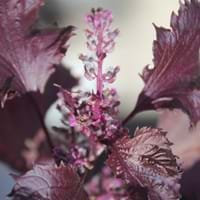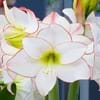Life Span
Perennial
Annual
Type
Bulb or Corm or Tuber
Bush, Houseplant
Origin
Hybrid origin
Eastern Asia, India, Nepal, China
Types
Not Available
Perilla Frutescens Brittain auriculato-dentata, Perilla Frutescens Brittain acuta Kudo, Perilla Frutescens Brittain crispa Hand-Mazz
Number of Varieties
Not Available
Habitat
tropical environments
Cultivated Beds, Mountains, Temperate Regions, Tropical areas
USDA Hardiness Zone
8-11
9-11
AHS Heat Zone
Not Available
12 - 1
Sunset Zone
21,22
A1, A2, A3, H1, H2, 1a, 1b, 2a, 2b, 3a, 3b, 4, 5, 6, 7, 8, 9, 10, 11, 12, 13, 14, 15, 16, 17, 18, 19, 20, 21, 22, 23, 24
Habit
Clump-Forming
Upright/Erect
Flower Color
White, Red, Light Pink
White
Flower Color Modifier
Bicolor
Bicolor
Fruit Color
Green, Brown
Not Available
Leaf Color in Spring
Green, Dark Green
Purple, Burgundy
Leaf Color in Summer
Light Green
Purple, Black
Leaf Color in Fall
Several shades of Green
Purple, Black
Leaf Color in Winter
Light Green
Light Green
Leaf Shape
Long Linear
Cordate
Plant Season
Spring, Summer, Winter
Summer, Fall
Sunlight
Full Sun, Partial Sun
Full Sun, Partial Sun, Partial shade
Type of Soil
Loam, Sand
Clay, Loam, Sand
The pH of Soil
Acidic, Neutral
Acidic, Neutral, Alkaline
Soil Drainage
Well drained
Average
Bloom Time
Not Available
Summer
Tolerances
Deer resistant
Drought
Where to Plant?
Container, Ground, Pot
Container, Ground
How to Plant?
Divison, From Rhizomes, Tubers
Cuttings, Root Division, Seedlings
Plant Maintenance
Low
Medium
Watering Requirements
Average Water Needs
Average Water Needs, Never Over-water
In Summer
Lots of watering
Lots of watering
In Spring
Moderate
Moderate
In Winter
Average Water
Average Water
Soil pH
Acidic, Neutral
Acidic, Alkaline, Neutral
Soil Type
Loam, Sand
Clay, Loam, Sand
Soil Drainage Capacity
Well drained
Moist, Well drained
Sun Exposure
Full Sun, Partial Sun
Full Sun, Partial shade, Partial Sun
Pruning
Cut or pinch the stems, Remove damaged leaves, Remove dead branches, Remove dead leaves
Remove damaged leaves, Remove dead branches, Remove dead leaves
Fertilizers
as it is a flowering plant, use high phosphorous content fertilizer, Nitrogen, Phosphorous, Potassium, Requires high amount of nitrogen
All-Purpose Liquid Fertilizer
Pests and Diseases
Aphids, Grasshoppers, Mealybugs, Mites, Red blotch, Slugs, Snails
Aphids
Plant Tolerance
Deer resistant
Drought
Flowers
Showy
Insignificant
Flower Petal Number
Not Available
Single
Edible Fruit
Not Available
No
Fragrant Flower
Not Available
No
Fragrant Bark/Stem
No
Yes
Foliage Texture
Medium
Medium
Foliage Sheen
Glossy
Matte
Attracts
Bees, Butterflies, Hummingbirds
Butterflies
Allergy
poisonous if ingested
Not Applicable
Aesthetic Uses
Beautification, Bouquets, Cottage Garden, Showy Purposes
along a porch, deck or patio, Borders, Landscape Designing
Beauty Benefits
Not Available
Not Available
Environmental Uses
Not Available
Air purification
Medicinal Uses
Not Available
Cough, Fever, Lung Problems
Part of Plant Used
Flowers
Leaves, Seeds
Other Uses
Used as Ornamental plant, Used for bedding in gardens
Added to salads, Can be boiled and seasoned, pickled, Can be made into a herbal tea
Used As Indoor Plant
Yes
No
Used As Outdoor Plant
Yes
Yes
Garden Design
Container, Cutflower, Houseplant, Mixed Border, Tropical
Edible, Groundcover, Landscape
Botanical Name
HIPPEASTRUM 'Picotee'
PERILLA frutescens var. purpurascens
Common Name
Florist Amaryllis, Hippeastrum, Picotee Hippeastrum
Purpleleaf Perilla, Purpleleaf Shiso
In Hindi
HIPPEASTRUM
Purpleleaf Shiso
In German
HIPPEASTRUM
Purpleleaf Shiso
In French
HIPPEASTRUM
pérille de Nankin
In Spanish
Hippeastrum
Purpleleaf Shiso
In Greek
Hippeastrum
Purpleleaf Shiso
In Portuguese
HIPPEASTRUM
Purpleleaf Shiso
In Polish
Hippeastrum
Pachnotka zwyczajna
In Latin
Hippeastrum
Purpleleaf Shiso
Phylum
Magnoliophyta
Tracheophyta
Class
Magnoliopsida
Magnoliopsida
Order
Asparagales
Lamiales
Family
Amaryllidaceae
Lamiaceae
Clade
Angiosperms, Monocots
Angiosperms, Asterids, Eudicots
Tribe
Not Available
Elsholtzieae
Subfamily
Amaryllidoideae
Nepetoideae
Number of Species
Not Available
Season and Care of Hippeastrum and Purpleleaf Shiso
Season and care of Hippeastrum and Purpleleaf Shiso is important to know. While considering everything about Hippeastrum and Purpleleaf Shiso Care, growing season is an essential factor. Hippeastrum season is Spring, Summer and Winter and Purpleleaf Shiso season is Spring, Summer and Winter. The type of soil for Hippeastrum is Loam, Sand and for Purpleleaf Shiso is Clay, Loam, Sand while the PH of soil for Hippeastrum is Acidic, Neutral and for Purpleleaf Shiso is Acidic, Neutral, Alkaline.
Hippeastrum and Purpleleaf Shiso Physical Information
Hippeastrum and Purpleleaf Shiso physical information is very important for comparison. Hippeastrum height is 38.10 cm and width 30.10 cm whereas Purpleleaf Shiso height is 60.00 cm and width 25.40 cm. The color specification of Hippeastrum and Purpleleaf Shiso are as follows:
Hippeastrum flower color: White, Red and Light Pink
Hippeastrum leaf color: Green and Dark Green
Purpleleaf Shiso flower color: White
- Purpleleaf Shiso leaf color: Purple and Burgundy
Care of Hippeastrum and Purpleleaf Shiso
Care of Hippeastrum and Purpleleaf Shiso include pruning, fertilizers, watering etc. Hippeastrum pruning is done Cut or pinch the stems, Remove damaged leaves, Remove dead branches and Remove dead leaves and Purpleleaf Shiso pruning is done Remove damaged leaves, Remove dead branches and Remove dead leaves. In summer Hippeastrum needs Lots of watering and in winter, it needs Average Water. Whereas, in summer Purpleleaf Shiso needs Lots of watering and in winter, it needs Average Water.





